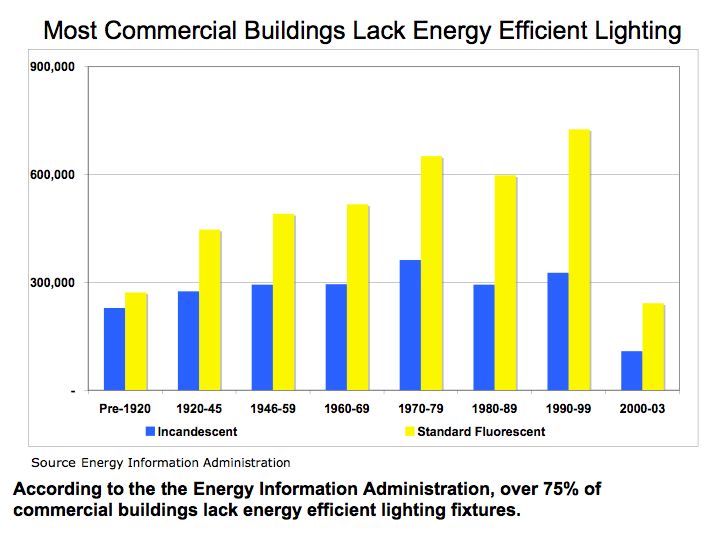Obama, Energy Efficiency and Lighting Retrofit
As President Obama takes office, energy efficiency takes center stage. One of he fastest roads to energy efficiency is to reduce consumption and the simplest approach to energy conservation is to change a light bulb.
Compact Fluorescent Light bulbs (CFL) recommended by the U.S. Department of Energy (DOE) offer substantial savings to homeowners. In the commercial market, lighting fixtures consume the greatest amount of electric energy; three times the energy consumption of air conditioning. According to research report from the Energy Information Administration (EIA), Commercial Buildings Energy Consumption Survey lighting consumes the largest amount of electricity in commercial buildings as measured by Kilowatt-hours (KWH) per Square Foot
To calculate KWH, multiply the wattage of your lighting fixture x the yearly hours of operation for your facility divided by 1,000. KWH per square foot provides a useful means of measuring the energy intensity of a building. Just divide KWH by the total square footage of the building.
In an energy audit one can determine the energy intensity of your building as measured by KWH/Sq Ft. Figure 1 illustrates the energy intensity by end use according to the EIA’s report in 2008 Electricity Consumption (kWh) Intensities by End Use.
Figure 1 Lighting Consumes Most Energy 
Furthermore, as part of the same research from the EIA, most commercial buildings are not using energy efficient lighting. The study finds that most commercial buildings, even those built after 1980, still rely on legacy incandescent and standard fluorescent light fixtures.
Figure 2 Most Commercial Buildings Lack Energy Efficient Lighting 
After your energy audit is complete and one knows their energy intensity the next step is to understand the efficiency of lighting systems. Lighting efficiency is measured in Lumens per Watt and is calculated by dividing the lumen output of the light by the Watts consumed. A lumen is one foot-candle foot-candle falling on one square foot of area.
While lumen output is important in measuring brightness, color temperature, measured in degrees Kelvin, indicates the hue color temperature of the light and is also important in evaluating lighting systems because lighting systems operating near 5500 degrees Kelvin simulate sunlight at noon. Energy efficient lighting fixtures provide twice the lumens per watt of electricity than legacy metal halide fixtures while offering higher color temperature enabling near daylight rendering.
Figure 3 Energy Efficient Lighting 
The bottom line is small steps sometimes produce big results. Retrofitting your building with energy efficient lighting systems saves energy, reduces operating expenses, and improves employee productivity and safety, while saving the environment. A 1.3 KWH reduction in power consumption reduces carbon dioxide (CO2) emissions by 1 pound. Coal generates about half the electric power in the U.S. and produces roughly ¾ of a pound of CO2 for every KWH of electric. In addition, the feasibility of alternative energy such as solar and wind are more viable by reducing energy consumption in buildings.
Related Posts